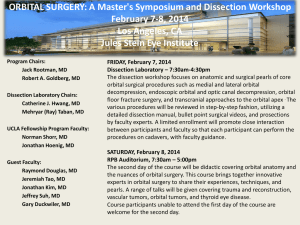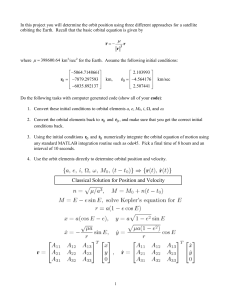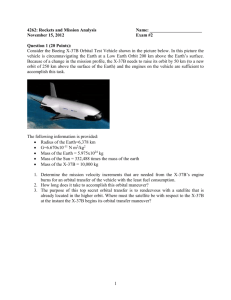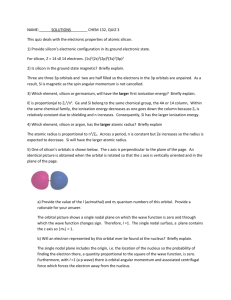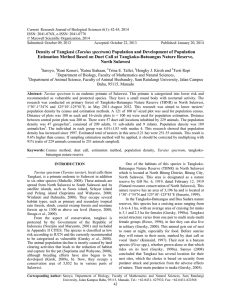Chaimanee et al. ESM text
advertisement
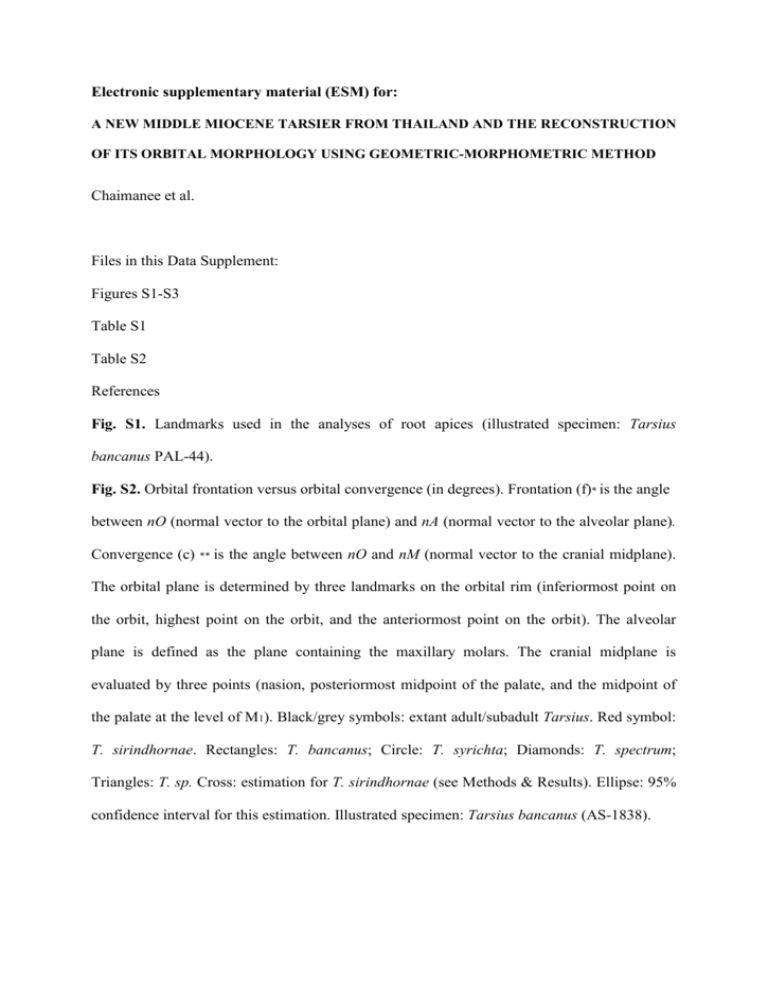
Electronic supplementary material (ESM) for: A NEW MIDDLE MIOCENE TARSIER FROM THAILAND AND THE RECONSTRUCTION OF ITS ORBITAL MORPHOLOGY USING GEOMETRIC-MORPHOMETRIC METHOD Chaimanee et al. Files in this Data Supplement: Figures S1-S3 Table S1 Table S2 References Fig. S1. Landmarks used in the analyses of root apices (illustrated specimen: Tarsius bancanus PAL-44). Fig. S2. Orbital frontation versus orbital convergence (in degrees). Frontation (f)* is the angle between nO (normal vector to the orbital plane) and nA (normal vector to the alveolar plane). Convergence (c) ** is the angle between nO and nM (normal vector to the cranial midplane). The orbital plane is determined by three landmarks on the orbital rim (inferiormost point on the orbit, highest point on the orbit, and the anteriormost point on the orbit). The alveolar plane is defined as the plane containing the maxillary molars. The cranial midplane is evaluated by three points (nasion, posteriormost midpoint of the palate, and the midpoint of the palate at the level of M1). Black/grey symbols: extant adult/subadult Tarsius. Red symbol: T. sirindhornae. Rectangles: T. bancanus; Circle: T. syrichta; Diamonds: T. spectrum; Triangles: T. sp. Cross: estimation for T. sirindhornae (see Methods & Results). Ellipse: 95% confidence interval for this estimation. Illustrated specimen: Tarsius bancanus (AS-1838). * Frontation differs slightly from the definition of Ross (1995). We preferred to use the alveolar plane as a horizontal reference instead of the nasion-inion chord, because the maxillary tooth row is well preserved in T. sirindhornae. ** Convergence in Tarsius: as defined by Ross, 1995. Fig. S3. Principal Components Analyses (PCA) of root apex and orbital contour shape. (A) Root apex shape variability in subspace spanned by the first 2 PCs. (B) Corresponding virtual morphologies at extreme values of PC1 (-0.11; 0.1) and PC2 (-0.12; 0.095) in lateral (red) and superior (black) views. Grey/black symbols: extant subadults and adults. Red symbol: T. sirindhornae. Rectangles: T. bancanus; Circle: T. syrichta; Diamonds: T. spectrum; Triangles: T. sp.; Cross: T. sirindhornae. Illustrated specimen: Tarsius syrichta (AS-1840). Table S1 Measurements of Tarsius sirindhornae n. sp. and extant Tarsius. Table S2 Measurement of extant Tarsius on frontation, convergence and orbital diameter. References Ross, C. F. 1995. Allometric and functional influences on primate orbit orientation and the origins of the Anthropoidea. J Hum Evol 29, 201-227.



